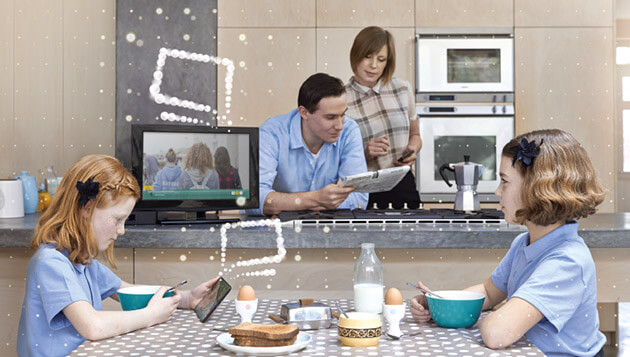*On 31 March each year our monthly prices will increase by £3 for broadband, £2 for TV and £1.50 for mobile SIM, Airtime and Connected Devices. Out of bundle charges will increase by 5%. See ee.co.uk/prices-explained for details. All prices shown are in contract prices. The cost of other services you take from us may increase or decrease while you are an EE customer.
What is Broadband?
In the simplest terms, broadband is a permanent internet connection that brings internet signal into your home. Back when household internet first began, it used a dial-up connection through your telephone line. This didn’t allow for the same high speeds we commonly enjoy today.
Nowadays, the single band has been replaced by lots of bands – which is where the name ‘broadband’ comes from. The most common household fixed line broadband is either ADSL (also known as ‘Copper’) or Fibre – the main difference being the type of wires the internet goes through.



